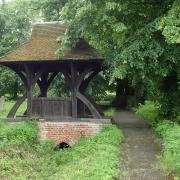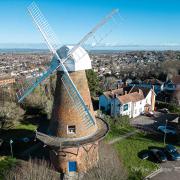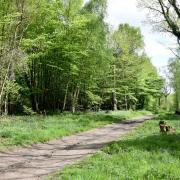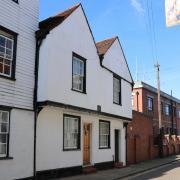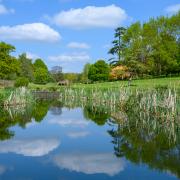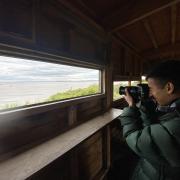IT’S one of Essex’s most important heritage sites. There is literally nothing left like it in the world, but unless people help Stow Maries Great War Aerodrome to soar in visitor numbers, the museum’s future is uncertain...
'It’s not often we see the word ‘unique’ used accurately. But at Stow Maries Great War Aerodrome, we fit the dictionary description. We’re proud of it, too,' says its chief executive officer, Ian Flint.
Ian is not overreaching here. The aerodrome lies in Purleigh, to the east of Chelmsford and west of Maldon, within an area of gently rolling farmland. It’s won awards for its exhibitions, it’s been royally recognised, it homes unique collections of vintage aeroplanes and memorabilia and to top it off, it’s designated site for endangered wildlife.

The museum’s patron is none other than popular TV historian Dan Snow, who drops in to visit whenever he can and the site probably boasts the most skilled set of volunteers of any charity anywhere. So, what’s the problem? Well, despite the thousands who visit ever year the aerodrome is still considered a hidden gem. A bit too hidden, actually.
'Not enough people know we are here. We need another 6,000 to 10,000 visitors per year to survive,' stressed Ian.
'I’m doing everything I can to get the message across. We are the only surviving Great War Aerodrome functioning untouched as such in Europe, as well as the largest collection of Royal Flying corps buildings in the world!'
Originally opened in 1916 as home to B Flight of No 37(HD) Squadron, Royal Flying Corps, the aerodrome saw the birth of the air defence of Great Britain in response to the first raids by German Zeppelins and Gotha bombers on London and the Southeast during the First World War.

The pilots who came to Stow Maries to serve came from not only Britain but all over the world- from the Azores to Australia. Many were teenagers who paid the price for bravery with their lives.
The museum site today contains 22 of the original buildings (many, painstakingly refurbished by volunteers) which were built to house the hundreds of aircraft, pilots and support staff from the Royal Flying Corps and later the Royal Air Force- who worked and lived at the site during the Great War.
A range of amenities were needed to house the personnel and aircraft- sheds, maintenance stores, accommodation blocks, a blacksmiths shop, fuel stores, latrines, a water tower, even a mortuary. At first the buildings were made from timber and canvas tents but as the aerodrome grew these were replaced with more permanent buildings that can be seen today.
Stow Maries played a key role in the Battle for Britain (the first London Blitz) and it was at Stow Maries that No 37 Squadron transitioned from the Royal Flying Corps to the Royal Air Force in April 1918. It continued in its dedicated role until May 1919, when the RAF closed its doors forever.

After that the site reverted to Flambirds Farm and its age-old farming role. The existing buildings were repurposed or converted to residential and agricultural use and the airfield turned over to pasture.
Following its re-discovery by a private concern, the site was designated a conservation area in 2009 and in 2012 all surviving buildings were listed Grade II*. Because of the site's condition and importance, it was included on the Historic England 'At-Risk Register'
In late 2012 the aerodrome was put up for sale and a campaign led by Essex County Council and Maldon District Council led to the acquisition of the site for the nation, placed under the management of Stow Maries Great War Aerodrome Ltd, (SMGWA) a purpose-created charity.
Since the Trust's inauguration, great amounts of work have been undertaken. Supported by an army of volunteers, the site has made giant leaps forward. Visitors who come here today can peruse genuine WW1 planes and interactive displays which chart the history of the site. There are also regular themed war days, fly overs, air festivals, vintage car meets and even an escape room attraction.

A highlight of the museum are expensive and eerily realistic waxworks of the actual men and women who served at Stow Maries. One of them is Claude Ridley, who was one of the true heroes of the aerodrome. He was just 19 when he became the site’s first commanding officer, and his story is an inspiring one of gallantry in action.
Others were Sydney Armstrong. Aged just 18 he took off from Goldhanger and for two hours patrolled the Goldhanger/Easthrope lone looking for a solitary Giant bomber heading for London. Armstrong’s BE 12 6610 aircraft crashed into a field in Tollshunt Major near Tiptree, bursting into flames and engulfing him.
Poor Frederick Crowley endured the same fate in February 1918. Just two days after joining 37 Squadron he took off and stalled near to the ground, hitting a tree. He crashed next to the Cricketers pub in Goldhanger. The landlord rushed to Maldon to get a Catholic priest to perform the last rites.

Another of the waxworks is of Captain Albert Baird Fanstone. He can be seen at the museum lying on his bed relaxing and writing letters home. He loved animals and on the bed is the aerodrome cat. Fanstone was a flight commander and was based at Stow Maries after returning from serving on the Western Front.
There are many cold hard truths to be learnt, which can put a lump in the throat as visitors make their way around the museum- not least how these young pilots had a life expectancy of minutes once they were engaged in action.
In the early days of aerial combat, a revolver and a rifle were the only weapons carried by pilots. But they were largely ineffective against enemy aircraft. As a result, many pilots opted to carry a revolver to spare themselves if their plane caught fire. A bullet through the head was thought preferable to burning alive.

At that time British airmen did not carry parachutes unlike some Germans. Reasons for not providing lifesaving parachutes was that they were thought to be too bulky for the cockpit- and that the airman might use it rather than getting his aeroplane home safely!
Ten men died while serving with 37 Squadron, five at Stow Maries, three at Goldhanger and two at Rochford. All were due to flying accidents or enemy fire. There is a memorial at the aerodrome marking their sacrifice.
Another string to its bow is that the aerodrome site is deemed of high environmental importance due to its ponds and meadow which are home to declining farmland species including the Brown Hare, Corn Bunting, Yellowhammer and a variety of owls.
In 2017 TV historian and broadcaster Dan Snow was appointed as a patron of the aerodrome.

The presenter and author has backed the site since his visit to the airfield to view some of the newly renovated buildings. He said: 'This vital heritage site is an extraordinary place; a moment in time captured for posterity and commemoration. It must survive. Not only as a tribute to those that served in the conflict, but also as a salute to the early aviators that our nation relied upon across the 20th century.'
Ian spelt out the dire situation that the charity is going through: 'Our Arts Council-accredited museum, with its award-winning exhibitions, royally recognised volunteers, unique collections, and endangered wildlife is at a real risk of being lost forever – due to its ‘hidden gem’ status.
'The museum has won all manner of grants for project work – saving its buildings, preserving its wildlife and engaging with young people – but these grants rarely support core costs – power, utilities, salaries, insurances. Core costs are met by visitors coming to the site and using the Airmen’s Mess Café, shop or attending events. Without core costs being covered, the museum is at risk of permanent closure.'

He continued: 'We are now committed to building visitor numbers, using grant funding to achieve strong profile building and market presence. We have hundreds of brilliant reviews from families, enthusiasts, historians online and lots of support on social media that show high level of satisfaction from our visitors.'
Ian, who has a long history of working at heritage sites, added: 'Having been honoured to care for everything from 12th century castles to regency mansions, including national collections of millions of objects up to and including paintings by Rembrandt, ancient Egyptian mummies and all manner of unique parts of our heritage, I have never found anywhere with so important a story to tell as Stow Maries.'
His final message is a poignant one: 'Come and see us. We are here for you- just like we were over 100 years ago. RFC Stow Maries was here when Essex needed it in 1916 – and now it’s time to return the favour.'
If only people knew how much they owe to this historic treasure, which now needs a helping hand.
The museum, in Hackmans Lane, is open Fridays, Saturdays and Sundays on non-event days. Regular festivals, school tours and themed events are held.
Stowmaries.org.uk




